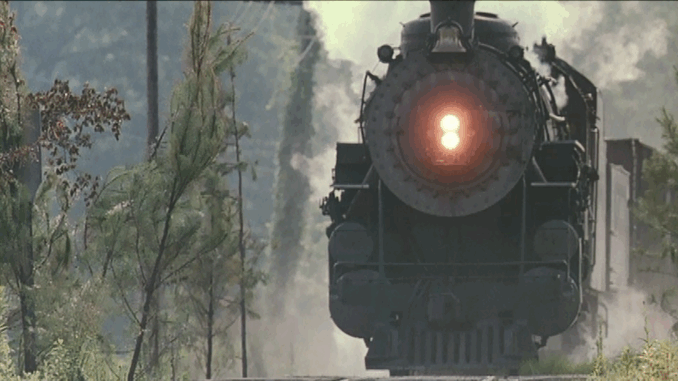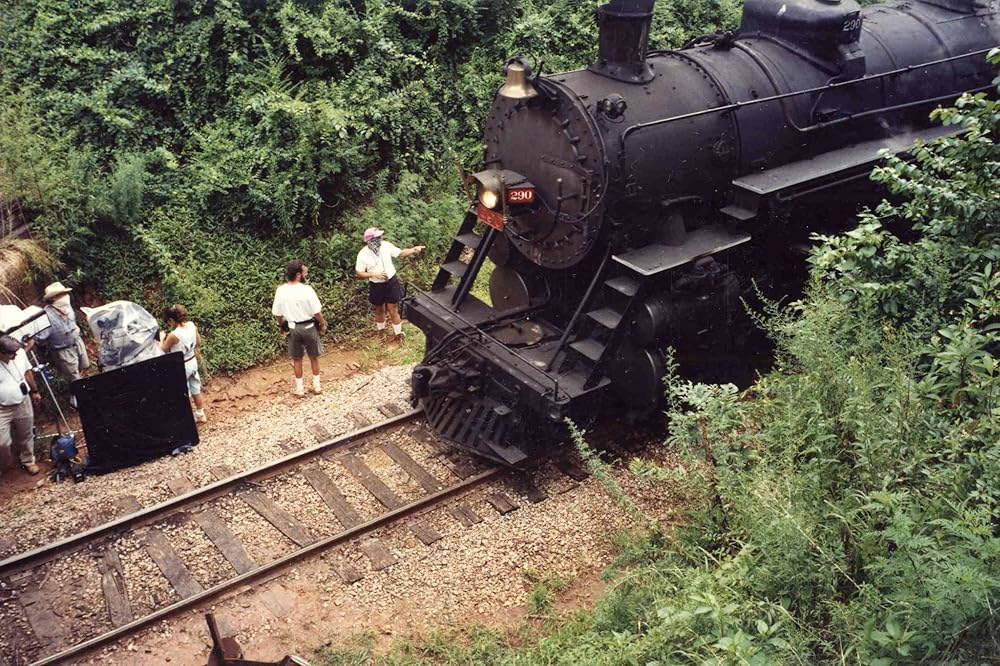
More Than Just a Train
In Fried Green Tomatoes, trains rumble in and out of scenes like background noise. But for those paying attention, the train is more than a piece of Southern atmosphere—it’s one of the film’s most potent and enduring symbols.
From the very first moments—when young Buddy Threadgoode meets his tragic end—the train becomes a physical and emotional force in the lives of the characters. It represents loss, the passage of time, life’s unstoppable momentum, and the choice between moving forward or standing still.
Like the stories woven by Ninny, the train in Fried Green Tomatoes connects the past and the present, the living and the lost, the personal and the communal. This article explores how that simple machine of steam and metal becomes an emotional locomotive for the entire film.
The Tragedy on the Tracks
The most haunting moment tied to the train comes early in the story: Buddy Threadgoode, Idgie’s beloved older brother, is struck and killed by a train as he tries to retrieve a friend’s hat from the tracks. His death is sudden, shocking, and deeply symbolic.
Buddy is young, full of promise, and deeply kind. His death leaves an emotional crater—not just for Idgie, who idolizes him, but for the entire community. And it’s the train that takes him.
This scene cements the train as a harbinger of irreversible change. It’s not evil—it’s indifferent. It barrels forward without malice, but without mercy. Life, like the train, does not stop to ask permission.
For Idgie, this trauma becomes the point where her carefree childhood ends. Her grief transforms her from an innocent tomboy into a guarded, rebellious outsider. The train doesn’t just kill her brother—it alters the trajectory of her life.
The Train as a Symbol of Time and Memory

As the film shifts between past and present, the train continues to appear—whistling in the distance, chugging past the café, marking the rhythm of daily life. Its presence binds the two timelines together.
For Ninny, now elderly and retelling the story from a nursing home, the train is a sound from another life. It carries the echo of Whistle Stop’s heyday, when people came and went, when the café was alive, and when Buddy, Ruth, Idgie, and Big George were all still young.
Each time the train is heard, it seems to stir something in her—a memory, a detail, a thread in the tapestry of her story. In this way, the train becomes a conduit of memory, pulling thoughts from distant decades and giving them new life.
Even Evelyn, listening to Ninny’s tales in the present, is drawn into this rhythm. The train connects them both to a world that no longer exists, but that lives on in recollection.
The Whistle Stop Café and the Tracks That Define It
The café sits close to the tracks, both literally and symbolically. The town’s very name—Whistle Stop—comes from the train. This isn’t just geography—it’s identity.
The café thrives because of the train. Travelers pass through. Locals gather nearby. The steam, the clanging, the whistle—it’s the soundtrack of the community. As long as the train runs, life pulses through Whistle Stop.
But as time passes, the train stops coming. The town dwindles. Businesses close. The café shutters. Without the train, Whistle Stop becomes a ghost town.
This isn’t just economic—it’s emotional. The end of the train’s service marks the end of an era. It’s the slow fade of memory into obscurity. The tracks remain, rusting in the sun, like scars of a once-vibrant community.
The decline of Whistle Stop mirrors what happens to Evelyn in the beginning of the film: once full of life, now forgotten. But just as Evelyn begins to awaken, so too do the memories of the town, brought back by Ninny’s stories—and the faint sound of the train in the distance.
The Train and Choice: Stay on the Platform or Jump Aboard?
The train also represents decision and momentum. Do you board the train and embrace change, or do you let it pass and stay safely behind?
For Idgie, the answer is clear—she jumps headlong into life. After Buddy’s death, she doesn’t retreat forever. Instead, she finds new love in Ruth, builds the café, and fights for her community. She chooses forward motion, even through grief.
Evelyn, too, must make this choice. Stuck in a life that doesn’t fulfill her, she meets Ninny and begins to see herself anew. She transforms—not because someone forces her to, but because she chooses to catch the train of her own story before it’s too late.
The train doesn’t wait. Neither does life. And the film reminds us that fear of change is natural—but the price of staying behind can be stagnation and regret.
The Ghost Train of Memory
In the final moments of the film, the train still lingers—not in literal form, but in sound, in memory, in suggestion.
Ninny’s identity remains ambiguous. Is she really Idgie, telling her story in disguise? Or is she simply a vessel of remembrance? Either way, she embodies the past that refuses to vanish entirely. She is the conductor of memory’s train, guiding Evelyn—and us—through the tunnels of time.
And Evelyn, who once felt invisible, now walks with confidence. She has boarded the train. She is in motion.
The film doesn’t need to end with a whistle or a locomotive to remind us: the train still runs. In our choices, in our stories, in our ability to move forward after loss.
Conclusion: The Tracks We All Travel
The train in Fried Green Tomatoes is more than a vehicle—it is a metaphor for life itself. It comes without warning. It carries us from one season to another. Sometimes, it brings tragedy. Sometimes, it brings opportunity.
But always, it moves.
And like Idgie, Ruth, Sipsey, Big George, and Evelyn, we are all passengers—or we’re standing at the platform, deciding whether to jump.
So when you hear the distant whistle, ask yourself: Are you waiting, or are you ready to ride?
